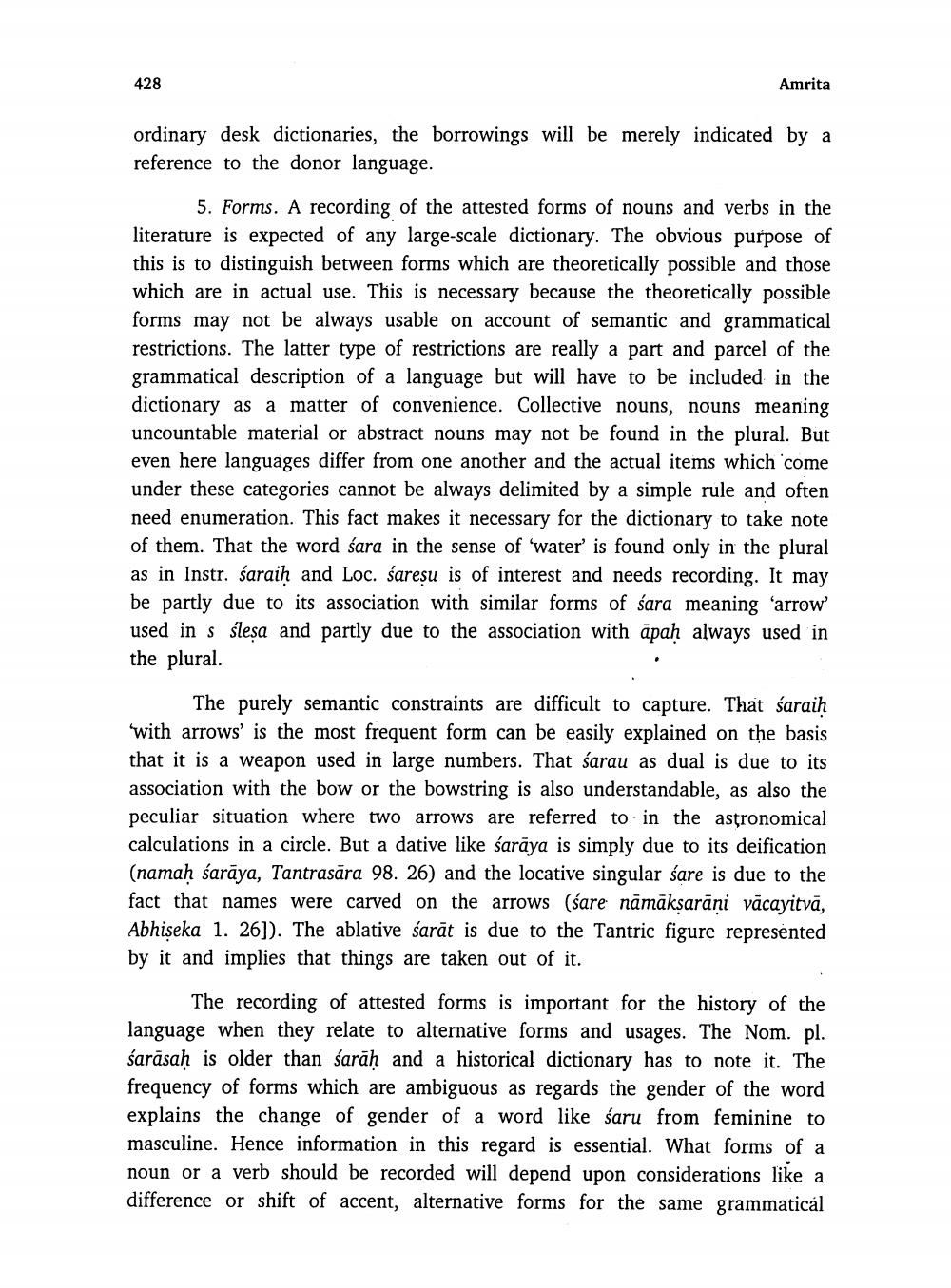________________
428
Amrita
ordinary desk dictionaries, the borrowings will be merely indicated by a reference to the donor language.
5. Forms. A recording of the attested forms of nouns and verbs in the literature is expected of any large-scale dictionary. The obvious purpose of this is to distinguish between forms which are theoretically possible and those which are in actual use. This is necessary because the theoretically possible forms may not be always usable on account of semantic and grammatical restrictions. The latter type of restrictions are really a part and parcel of the grammatical description of a language but will have to be included in the dictionary as a matter of convenience. Collective nouns, nouns meaning uncountable material or abstract nouns may not be found in the plural. But even here languages differ from one another and the actual items which come under these categories cannot be always delimited by a simple rule and often need enumeration. This fact makes it necessary for the dictionary to take note of them. That the word śara in the sense of 'water is found only in the plural as in Instr. saraih and Loc. śaresu is of interest and needs recording. It may be partly due to its association with similar forms of sara meaning "arrow used in s slesa and partly due to the association with āpah always used in the plural
The purely semantic constraints are difficult to capture. That saraih 'with arrows' is the most frequent form can be easily explained on the basis that it is a weapon used in large numbers. That sarau as dual is due to its association with the bow or the bowstring is also understandable, as also the peculiar situation where two arrows are referred to in the astronomical calculations in a circle. But a dative like sarāya is simply due to its deification (namaḥ śarāya, Tantrasāra 98. 26) and the locative singular śare is due to the fact that names were carved on the arrows (sare nämāksarāni vācayitvā, Abhiseka 1. 26]). The ablative sarāt is due to the Tantric figure represented by it and implies that things are taken out of it.
The recording of attested forms is important for the history of the language when they relate to alternative forms and usages. The Nom. pl. śarāsaḥ is older than sarāḥ and a historical dictionary has to note it. The frequency of forms which are ambiguous as regards the gender of the word explains the change of gender of a word like śaru from feminine to masculine. Hence information in this regard is essential. What forms of a noun or a verb should be recorded will depend upon considerations like a difference or shift of accent, alternative forms for the same grammatical




